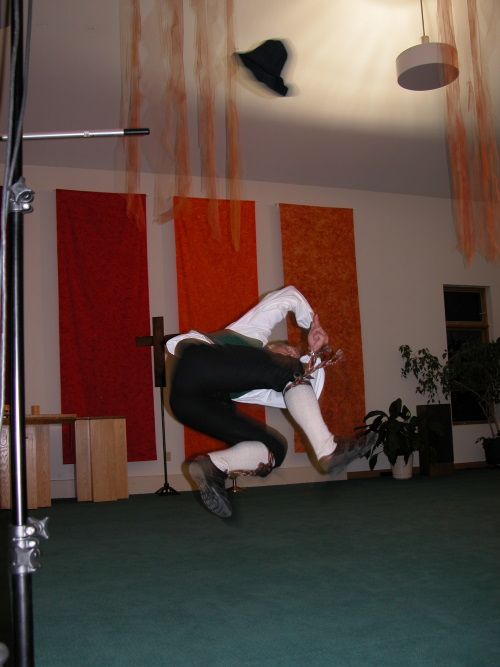On Sunday night The Dulcinea and I took in some Nord musikk with a performance by Hauk Buen. Buen is a master of the Norwegian Hardanger fiddle. The Hardanger is a type of violin but has 8 or 9 strings. The melody is accompanied by a drone, which gives the Hardanger a very unique sound.
I admit ignorance when it comes to Nord musikk and Hauk Buen so let me quote from the Hardanger Fiddle Association of America:
Hauk Buen is regarded as one of the foremost Hardanger fiddle (hardingfele in Norwegian) players today in Norway.
Hauk was born in 1933 on the Buen farm in Jondalen. At that time the farm was in Telemark; the border has since changed and the farm is now in Buskerud county. He was surrounded by the music of Telemark all his life and comes from a family of outstanding Telemark folk musicians.
Hardanger fiddle tradition is to learn tunes in the style of a particular fiddler. Olav Løndal (1904-1986) marked Hauk’s playing style forever. Through Olav Løndal, Hauk became the particular bearer of the tradition of Lars Fykerud (1860-1902) and Svein Løndal (1864-1949). Hauk early on also came in contact with Rikard Gøytil in Rauland who gave him the original tradition of Myllarguten, transmitted through Tarjei Skinan, the grandson of the master. Through Hauk, the tunes of Myllarguten are known and learned by fiddlers today.
Last night's program was a tribute, of sorts, to Lars Fykerud who is mentioned above. Because of my ignorance, I really can't tell you much about how the songs displayed the hallmarks of Fykerud. What I can say is that I enjoyed the show very, very much. It was my introduction to the Hardanger as well as to traditional Norwegian dancing.
Buen sat in a chair for the performance and next to him was Andrea Een, a music professor at St. Olaf College in Northfield, MN. St. Olaf is the only place in the States where you can learn to play the Hardanger for credit. Since Buen did not speak any English, Een translated his introductions to the songs for the audience. There were, however, a smattering of folks who spoke Norwegian as, when he would smile at something he'd said, certain members of the audience would laugh along with him. No doubt something was lost in translation.
The introductions to the pieces varied quite a bit. For a couple, he talked briefly about the life of Lars Fykerud. Fykerud was a popular musician at the end of the 19th century and, odd as it seems now, was tremendously so here in the United States. He played many a concert here in the Madison area a little over a century ago and I presume that he made his way to Stoughton on most of those trips. Buen also commented on the origins of the songs themselves. I can't recall everything but I do remember him saying how a dream inspired one of the pieces he played. In addition, he would comment on the place of origin of a particular song, whether it be Telemark or another region. I recall Telemark well because of the Telemark Lodge up nort, near Cable, Wisconsin. I have to admit that, when he struck his first notes, a shiver ran down my spine. There's just something about folk culture with which I am unfamiliar - my introduction to it can sort of be overwhelming. I'm not sure what it is, exactly. Maybe it's being able to share in something that obviously means so much to those around me who are offering.
The last song of the first set involved the dancers accompanying him. There was Karin Brennesvik:
And Sigbjørn Rua:
Rua began learning the dance at the age of 7 and Brennesvik was his teacher. As you can see, they were decked out in traditional Norwegian garb. While some would say that I'm haberasherily-challenged, I want to say that Buen's vest and shirt with the funky collar and poofy sleeves was really neat. After a brief intermission, the show resumed.
As Buen played, Brennesvik stood on a chair and held out a pole which had a hat dangling from the end. Rua would dance in a circle a few times and then do a flip and kick the hat off of the pole. He missed the first time but nailed it on the second.
When the dancers were introduced, it was remarked that Brennesvik comes from a family who danced constantly. Every family gathering involved dancing - from birthdays to funerals and all holidays in between. I can't help but get a weird feeling when watching traditional dance such as I saw last night. It is just so unlike the dancing that permeates our mass culture today. There was the lack of eroticism, the difference in age between the dancers, the costumes - just the whole ball of wax.



No comments:
Post a Comment